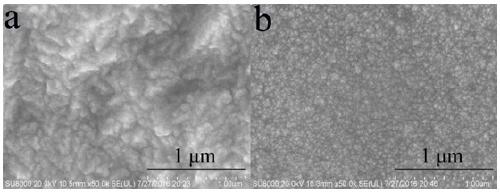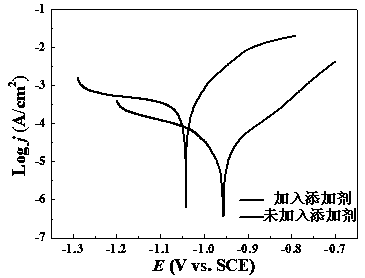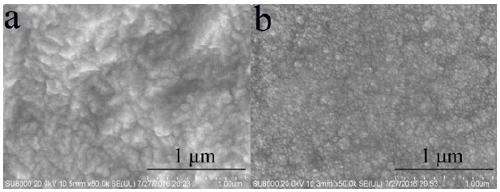Alkaline cyanide-free electrodeposited zinc-nickel alloy additive and its application
A zinc-nickel alloy and additive technology, applied in the field of electroplated zinc-nickel alloy, can solve the problems of poor stability, low current efficiency, poor coating quality, etc., and achieve the effects of high stability, high current efficiency, and improved coating performance
- Summary
- Abstract
- Description
- Claims
- Application Information
AI Technical Summary
Problems solved by technology
Method used
Image
Examples
specific Embodiment approach 1
[0015] Embodiment 1: The alkaline cyanide-free electrodeposited zinc-nickel alloy additive in this embodiment is formulated from additives and ultrapure water. The additives are organic additives or a mixture of inorganic additives and organic additives. The components of the additive The concentration is 0.1 ~ 50 g / L.
[0016] Alkaline cyanide-free electrodeposition zinc-nickel alloy operation is as follows:
[0017] 1. Preparation of alkaline cyanide-free electrodeposition zinc-nickel alloy additive:
[0018] Sequentially weigh the corresponding amount of organic additives or a mixture of inorganic additives and organic additives, prepare a clear solution with ultrapure water, and store at a constant volume.
[0019] 2. Alkaline cyanide-free electrodeposition zinc-nickel alloy plating solution preparation:
[0020] (1) Use hydantoin derivatives as the main complexing agent, weigh the main complexing agent 20 ~ 400 g / L, and zinc sulfate: 5 ~ 200 g / L and mix to obtain a clea...
specific Embodiment approach 2
[0032]Specific embodiment two: the difference between this embodiment and specific embodiment one is that the components and concentrations of the electrodeposited zinc-nickel alloy additives are: adenine 10 g / L, guanine 5 g / L, cinnamon acetic acid 10 g / L g / L, antimony trichloride 0.5 g / L, potassium tellurite 5 g / L, and the additive dosage is 5 mL / L. The obtained coating has a bright, uniform and smooth appearance. SEM observation shows that the coating crystal is fine, dense, and free of pores and cracks. , The corrosion resistance test found that the corrosion resistance has been significantly improved.
specific Embodiment approach 3
[0033] Specific embodiment three: the difference between this embodiment and specific embodiments one and two is that the components and concentrations of the electrodeposited zinc-nickel alloy additives are: polyacrylamide 20 g / L, 3-methylquinoline 10 g / L, gum arabic 5 g / L, selenium dioxide 2 g / L, sodium dodecyl sulfonate 1 g / L, and the additive dosage was 10 mL / L. The crystals are fine, dense, free of pores and cracks, and the corrosion resistance test shows that the corrosion resistance has been significantly improved.
PUM
| Property | Measurement | Unit |
|---|---|---|
| electrical resistivity | aaaaa | aaaaa |
Abstract
Description
Claims
Application Information
 Login to View More
Login to View More - R&D
- Intellectual Property
- Life Sciences
- Materials
- Tech Scout
- Unparalleled Data Quality
- Higher Quality Content
- 60% Fewer Hallucinations
Browse by: Latest US Patents, China's latest patents, Technical Efficacy Thesaurus, Application Domain, Technology Topic, Popular Technical Reports.
© 2025 PatSnap. All rights reserved.Legal|Privacy policy|Modern Slavery Act Transparency Statement|Sitemap|About US| Contact US: help@patsnap.com



